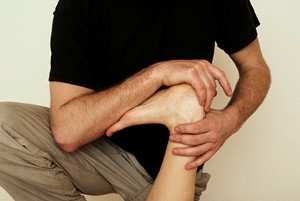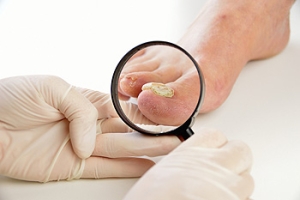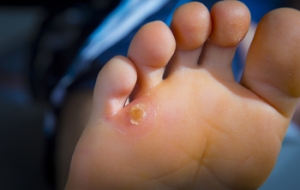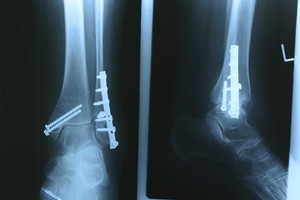Richfield (435) 896-6497
Ephraim (435) 283-4076

Stretching the Plantar Fascia
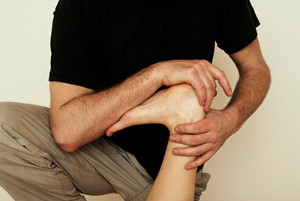 Many people who enjoy running are aware of the importance of stretching their feet. The pain that is felt from the foot condition that is known as plantar fasciitis generally occurs as a result of repetitive use. Research has indicated there are specific stretches that can be performed for the plantar fascia. These can include towel stretches, and certain massage techniques. Additionally, this part of the foot can be stretched by rolling the bottom of the foot on a tennis ball. Flexibility may be increased when the calf muscles are lengthened. This is implemented by facing a wall while standing, and gently stretching one leg at a time. If you would like more information about the benefits of stretching the feet, please consult with a podiatrist.
Many people who enjoy running are aware of the importance of stretching their feet. The pain that is felt from the foot condition that is known as plantar fasciitis generally occurs as a result of repetitive use. Research has indicated there are specific stretches that can be performed for the plantar fascia. These can include towel stretches, and certain massage techniques. Additionally, this part of the foot can be stretched by rolling the bottom of the foot on a tennis ball. Flexibility may be increased when the calf muscles are lengthened. This is implemented by facing a wall while standing, and gently stretching one leg at a time. If you would like more information about the benefits of stretching the feet, please consult with a podiatrist.
Why Stretching Is Important for Your Feet
Stretching the feet is a great way to prevent injuries. If you have any concerns with your feet consult with Dr. Blake Zobell from Utah. Our doctor will assess your condition and provide you with quality foot and ankle treatment.
Stretching the Feet
Stretching the muscles in the foot is an important part in any physical activity. Feet that are tight can lead to less flexibility and make you more prone to injury. One of the most common forms of foot pain, plantar fasciitis, can be stretched out to help ease the pain. Stretching can not only ease pain from plantar fasciitis but also prevent it as well. However, it is important to see a podiatrist first to determine if stretching is right for you. Podiatrists can also recommend other ways to stretch your feet. Once you know whether stretching is right for you, here are some excellent stretches you can do.
- Using a foam roller or any cylindrical object (a water bottle or soda can will do), roll the object under your foot back and forth. You should also exert pressure on the object. Be sure to do this to both feet for a minute. Do this exercise three times each.
- Similar to the previous exercise, take a ball, such as a tennis ball, and roll it under your foot while seated and exert pressure on it.
- Grab a resistance band or towel and take a seat. If you are using a towel, fold it length wise. Next put either one between the ball of your foot and heel and pull with both hands on each side towards you. Hold this for 15 seconds and then switch feet. Do this three times for each foot.
- Finally hold your big toe while crossing one leg over the other. Pull the toe towards you and hold for 15 seconds. Once again do this three times per foot.
It is best to go easy when first stretching your foot and work your way up. If your foot starts hurting, stop exercising to ice and rest the foot. It is advised that you then see a podiatrist for help.
If you have any questions, please feel free to contact one of our offices located in Richfield and Ephraim, Utah . We offer the newest diagnostic and treatment technologies for all your foot care needs.
How to Stretch Your Feet
Your feet endure a great amount of stress each day from constantly allowing us to move around. It is important to stretch your feet to help prevent them from becoming injured. Your toes may easily deform into unhealthful positions if they are not stretched.
One of the most common reasons for toe deformities are the shoes you may be wearing. Shoes that are too tight may fold and shift the toes out of place. Heeled shoes may also push your toes upward. Forcing your toes into an unnatural position which may cause the muscles to tighten and prevent them from reverting to normal length. Another common reason is improper use of foot muscles. Many people fail to use the muscles in their feet or toes when they walk. Lastly, the positioning of your feet while walking may also cause toe deformities. If you walk with your feet facing outward, your “push-off” phase is on the side of your big toe instead of the bottom of your foot. This may cause the big toe to eventually tighten into a new shifted position.
There are many reasons why stretching your toes may be helpful. One reason is that healthy spacing may aid in avoiding calluses and other injuries that are caused by rubbing. Stretching will also prevent you from developing toes that curl, hammertoes, or bunions.
A great way to stretch your toes is to place them in your hands and bend them all downward; this will help you stretch the top of your foot. Next, you should repeat this process but instead bend them upward enough to feel a nice stretch in the bottom of your foot. You should then try to pull each toe apart from the next and pull any toes that are bent upward until they are back downward.
If you are looking to practice stretching your entire foot, you can try a towel stretch. This is done by sitting on the floor with your legs in front of you. Take a towel and wrap it around your toes. Afterward, pull the towel toward you with your toes and hold this position for 15 to 30 seconds before releasing. Practice this stretch for three sets. Another stretch your feet are towel lifts. This is done by sitting in a chair and trying to pick a towel up from the ground with your toes. Try lifting the towel with your little toes for five sets before switching feet.
If you are an athlete, or exercise often, it is especially important for you to practice stretching your feet. Those who suffer from foot pain caused by poor footwear, plantar fasciitis, or long hours of standing at work may also benefit from foot exercises.
How Can a Fungal Toenail Develop?
 Fungal toenails, while often unsightly, can also be extremely uncomfortable. They can be identified by discoloration and thickening of the toenail. In some cases the nail may become so brittle that it breaks or splits, causing a great deal of pain. Fungal toenails can be more common among people who are diabetic, have a poor immune system, lack personal hygiene, and those who do not wear proper footwear in high risk fungal contaminated environments. Some of these environments can include public swimming pools, gyms, locker rooms, and communal showers. The fungi can enter through an opening in the nail, causing the infection. If left untreated, it may spread, creating more serious foot complications. For more advice on how to treat this condition, it is suggested that you seek professional care from a podiatrist.
Fungal toenails, while often unsightly, can also be extremely uncomfortable. They can be identified by discoloration and thickening of the toenail. In some cases the nail may become so brittle that it breaks or splits, causing a great deal of pain. Fungal toenails can be more common among people who are diabetic, have a poor immune system, lack personal hygiene, and those who do not wear proper footwear in high risk fungal contaminated environments. Some of these environments can include public swimming pools, gyms, locker rooms, and communal showers. The fungi can enter through an opening in the nail, causing the infection. If left untreated, it may spread, creating more serious foot complications. For more advice on how to treat this condition, it is suggested that you seek professional care from a podiatrist.
If left untreated, toenail fungus may spread to other toenails, skin, or even fingernails. If you suspect you have toenail fungus it is important to seek treatment right away. For more information about treatment, contact Dr. Blake Zobell of Utah. Our doctor can provide the care you need to keep you pain-free and on your feet.
Symptoms
- Warped or oddly shaped nails
- Yellowish nails
- Loose/separated nail
- Buildup of bits and pieces of nail fragments under the nail
- Brittle, broken, thickened nail
Treatment
If self-care strategies and over-the-counter medications does not help your fungus, your podiatrist may give you a prescription drug instead. Even if you find relief from your toenail fungus symptoms, you may experience a repeat infection in the future.
Prevention
In order to prevent getting toenail fungus in the future, you should always make sure to wash your feet with soap and water. After washing, it is important to dry your feet thoroughly especially in between the toes. When trimming your toenails, be sure to trim straight across instead of in a rounded shape. It is crucial not to cover up discolored nails with nail polish because that will prevent your nail from being able to “breathe”.
In some cases, surgical procedure may be needed to remove the toenail fungus. Consult with your podiatrist about the best treatment options for your case of toenail fungus.
If you have any questions, please feel free to contact one of our offices located in Richfield and Ephraim, Utah . We offer the newest diagnostic and treatment technologies for all your foot care needs.
Treating Toenail Fungus
Fungal infection of the toenail, or onychomycosis, typically appears as a gradual change in a toenail’s texture and color that involves brittleness and darkening. The fungal infection itself occurs beneath the surface of the nail. Aside from discoloration, other symptoms include the collection of debris beneath the nail plate, white marks on the nail plate, and a foul odor emanating from the nail. If ignored, the infection can spread into other nails and the skin; in severe cases, it can hinder one’s ability to work or walk.
The toenails are particularly vulnerable to contracting infection in moist environments where people are likely to be walking barefoot, such as around swimming pools, public showers, and locker rooms. Fungal infection may also be more likely to occur in nail beds that have been injured, and sufferers of chronic diseases such as diabetes, circulatory problems, or immunodeficiency conditions are particularly prone to developing fungal nails.
Fungal nails can be primarily prevented by practicing proper hygiene and regularly examining the feet and toes. Carefully washing the feet with soap and water and thoroughly drying the feet afterwards are essential. Other tips include wearing shower shoes in public areas, changing shoes and socks daily, keeping toenails clipped at a short length, wearing breathable shoes that fit properly, wearing moisture-wicking socks, and disinfecting home pedicure tools and instruments used to cut nails.
Fungal nail treatment may vary between patients and the severity of the condition. Your podiatrist may suggest a daily routine of cleansing that spans over a period of time to ease mild infections. Over-the-counter or prescription antifungal agents may also be prescribed, including topical and/or oral medications. Debridement, or the removal of diseased nail matter and debris, may also be performed. In more severe cases, surgical treatment may be needed. In some instances, the temporary removal of the fungal nail allows for the direct application of a topical antifungal to the nail bed. In other cases, a chronically painful fungal nail that has not responded to other treatments may be permanently removed; this allows the infection to be cured and avoids the growth of a deformed nail.
Types Of Corns On The Feet
 A corn can cause severe discomfort while wearing shoes. There are two types of corns that can develop on the feet. Soft corns are generally found between the toes, and can occur from wearing shoes that do not have adequate room for the toes to move freely in. Hard corns are located on the sole of the foot, or on top of the toes, and can develop from excessive friction. Mild relief may be found when a protective pad is placed over the corn, and it is beneficial to wear shoes that fit correctly. Corns on the feet can cause your walking style to be altered, which naturally compensates for the pain and discomfort that is associated with corns. If you are afflicted with a corn on your foot, please consult with a podiatrist who can offer correct treatment techniques.
A corn can cause severe discomfort while wearing shoes. There are two types of corns that can develop on the feet. Soft corns are generally found between the toes, and can occur from wearing shoes that do not have adequate room for the toes to move freely in. Hard corns are located on the sole of the foot, or on top of the toes, and can develop from excessive friction. Mild relief may be found when a protective pad is placed over the corn, and it is beneficial to wear shoes that fit correctly. Corns on the feet can cause your walking style to be altered, which naturally compensates for the pain and discomfort that is associated with corns. If you are afflicted with a corn on your foot, please consult with a podiatrist who can offer correct treatment techniques.
Corns can make walking very painful and should be treated immediately. If you have questions regarding your feet and ankles, contact Dr. Blake Zobell of Utah. Our doctor will treat your foot and ankle needs.
Corns: What Are They? And How Do You Get Rid of Them?
Corns are thickened areas on the skin that can become painful. They are caused by excessive pressure and friction on the skin. Corns press into the deeper layers of the skin and are usually round in shape.
Ways to Prevent Corns
There are many ways to get rid of painful corns such as:
- Wearing properly fitting shoes that have been measured by a professional
- Wearing shoes that are not sharply pointed or have high heels
- Wearing only shoes that offer support
Treating Corns
Although most corns slowly disappear when the friction or pressure stops, this isn’t always the case. Consult with your podiatrist to determine the best treatment option for your case of corns.
If you have any questions please feel free to contact one of our offices located in Richfield and Ephraim, Utah . We offer the newest diagnostic and treatment technologies for all your foot and ankle needs.
Corns and Calluses
A corn is a lesion that forms in the skin of the foot, and it is typically circular in shape, small in size, and thick and rough in texture. A corn generally occurs as a result of repeated pressure on the skin; one example of this is the rubbing of a shoe against the skin. Corns differ from calluses in that their central cores are harder in texture.
A corn is a relatively common condition with a wide variety of treatment options. If a corn becomes overly uncomfortable or painful, consult with your podiatrist; he can determine the best method of treatment that is appropriate for you. Corns may return if the underlying cause of its development is not treated or removed. Avoid removing corns at home, as improper removal may cause infection.
A callus, similar to a corn, is an area of skin that has become thickened due to repeated pressure and rubbing. The rubbing causes the skin to create a layer of protective skin, which is the formed callus. Calluses can differ in size between people, and they can also become painful.
Multiple treatments are available for calluses. At-home treatment and removal should be avoided, as this can potentially lead to infection. Your podiatrist can best determine the cause of your calluses and suggest the treatment most appropriate for you.
Older Patients May Have Difficulty With Trimming Their Toenails
 It can be difficult for older people to properly care for their feet. This can be a result of having trouble bending down to trim the toenails, and they may not notice if there are existing cuts or bruises on the feet. Wearing shoes that fit properly is crucial in possibly preventing painful foot conditions from developing. These can include corns, bunions, and calluses. Cracked heels is a common ailment among seniors, and mild relief can be felt when a good moisturizer is frequently applied. When the toes are not trimmed on a routine basis, or when they are trimmed improperly, ingrown toenails can develop, and can become infected without prompt treatment. Many elderly people are under the care of a podiatrist who can guide them with properly taking care of their feet.
It can be difficult for older people to properly care for their feet. This can be a result of having trouble bending down to trim the toenails, and they may not notice if there are existing cuts or bruises on the feet. Wearing shoes that fit properly is crucial in possibly preventing painful foot conditions from developing. These can include corns, bunions, and calluses. Cracked heels is a common ailment among seniors, and mild relief can be felt when a good moisturizer is frequently applied. When the toes are not trimmed on a routine basis, or when they are trimmed improperly, ingrown toenails can develop, and can become infected without prompt treatment. Many elderly people are under the care of a podiatrist who can guide them with properly taking care of their feet.
Proper foot care is something many older adults forget to consider. If you have any concerns about your feet and ankles, contact Dr. Blake Zobell from Utah. Our doctor can provide the care you need to keep you pain-free and on your feet.
The Elderly and Their Feet
As we age we start to notice many changes in our body, but the elder population may not notice them right away. Medical conditions may prevent the elderly to take notice of their foot health right away. Poor vision is a lead contributor to not taking action for the elderly.
Common Conditions
- Neuropathy – can reduce feeling in the feet and can hide many life-threatening medical conditions.
- Reduced flexibility – prevents the ability of proper toenail trimming, and foot cleaning. If left untreated, it may lead to further medical issues.
- Foot sores – amongst the older population can be serious before they are discovered. Some of the problematic conditions they may face are:
- Gouging toenails affecting nearby toe
- Shoes that don’t fit properly
- Pressure sores
- Loss of circulation in legs & feet
- Edema & swelling of feet and ankles
Susceptible Infections
Diabetes and poor circulation can cause general loss of sensitivity over the years, turning a simple cut into a serious issue.
If you have any questions please feel free to contact one of our offices located in Richfield and Ephraim, Utah . We offer the newest diagnostic and treatment technologies for all your foot and ankle needs.
Elderly and their Feet
While proper foot care is important for everybody, senior citizens have the tendency to be more susceptible to certain foot conditions. The elderly should therefore be well informed about any problems that may arise and about what they can do to properly avoid or treat them.
Some of the most common foot problems seniors are susceptible to include foot ulcers, ingrown toenails, fallen arches, and fungal nails. A foot ulcer is an open sore on the foot and can be a result of diabetes and decreased sensation in the feet. An ingrown toenail is defined as when the nail grows into the side of the toe. Fallen arches are indicated by the instep of the foot collapsing. A fungal nails is a condition that results in deformed and discolored toenails.
In order to avoid these conditions it is recommended that the feet be inspected by the patient on a regular basis. If these inspections are carried out routinely, there is a good likelihood that problems can be identified before they become severe, or can even be avoided altogether. If any abnormality is discovered, it is important that the individual consult a podiatrist for diagnosis and information on treatment options.
Proper foot hygiene is also important. Making sure that you always have clean, dry socks on can be a major deterrent to many different problems including bacterial infections, foot odor, and certain types of fungus. Wet feet are a major cause of many of these problems. If your socks get wet, it is important to change them. Walking around in wet socks may not only lead to various infections, but can irritate the skin and result in a number of various complications. Clean, dry feet are less likely to be affected by fungal and other infections.
As people age, the fat present on your feet begins to deteriorate. The protective nature of this fat keeps the feet healthy by providing a barrier between your bones and the ground. This also aids in giving the skin on the feet a certain amount of elasticity. This is one factor that causes elderly people to develop some serious foot issues. Foot moisturizers can be helpful to avoid certain problems associated with this. However, water-based moisturizers do not work as well for elderly people as they do for the young. Instead, it is more effective to use an emollient instead. An emollient is effective because it binds the water in the foot, keeping it from becoming absorbed too readily which will result in dry skin. Emollients also have a special property called occlusion, which provides a layer of oil on the skin. This layer prevents the foot from drying up and can be very effective in treating dry skin disorders. If you can keep the skin on your feet healthy, this will substantially reduce the number of foot problems you will encounter in old age.
Proper footwear is another way to keep feet healthy. Shoes that fit well and provide proper support help prevent ingrown toenails and fallen arches.
Certain medical conditions such as diabetes or poor blood circulation increase the risk for foot issues. For individuals with any of these conditions it is extremely important to conduct regular foot inspections to make sure that there are no sores or infections present.
Understanding the Basics of Stress Fractures
 Stress fractures primarily occur when the feet are overused. As foot muscles get tired, they are unable to absorb as much shock from impact, and the stress is transferred to the bone. Over half of all stress fractures occur in the lower leg, and athletes involved in activities such as basketball, running, and gymnastics are at a higher risk for trauma. Since stress fractures can be difficult to diagnose through an X-Ray, communicating the risk of stress fractures to doctors is key, because they may have to resort to CT scans or MRIs. If diagnosed with a stress factor, rest is key. However, a podiatrist may be able to recommend shoe inserts or braces to help as well. For the best treatment methods, please consult with your local podiatrist.
Stress fractures primarily occur when the feet are overused. As foot muscles get tired, they are unable to absorb as much shock from impact, and the stress is transferred to the bone. Over half of all stress fractures occur in the lower leg, and athletes involved in activities such as basketball, running, and gymnastics are at a higher risk for trauma. Since stress fractures can be difficult to diagnose through an X-Ray, communicating the risk of stress fractures to doctors is key, because they may have to resort to CT scans or MRIs. If diagnosed with a stress factor, rest is key. However, a podiatrist may be able to recommend shoe inserts or braces to help as well. For the best treatment methods, please consult with your local podiatrist.
Stress fractures occur when there is a tiny crack within a bone. To learn more, contact Dr. Blake Zobell from Utah. Our doctor can provide the care you need to keep you pain free and on your feet.
How Are They Caused?
Stress fractures are the result of repetitive force being placed on the bone. Since the lower leg and feet often carry most of the body’s weight, stress fractures are likely to occur in these areas. If you rush into a new exercise, you are more likely to develop a stress fracture since you are starting too much, too soon. Pain resulting from stress fractures may go unnoticed at first, however it may start to worsen over time.
Risk Factors
- Gender – They are more commonly found in women compared to men.
- Foot Problems – People with unusual arches in their feet are more likely to develop stress fractures.
- Certain Sports – Dancers, gymnasts, tennis players, runners, and basketball players are more likely to develop stress fractures.
- Lack of Nutrients – A lack of vitamin D and calcium may weaken the bones and make you more prone to stress fractures
- Weak Bones – Osteoporosis can weaken the bones therefore resulting in stress fractures
Stress fractures do not always heal properly, so it is important that you seek help from a podiatrist if you suspect you may have one. Ignoring your stress fracture may cause it to worsen, and you may develop chronic pain as well as additional fractures.
If you have any questions, please feel free to contact one of our offices located in Richfield and Ephraim, Utah . We offer the newest diagnostic and treatment technologies for all your foot care needs.





